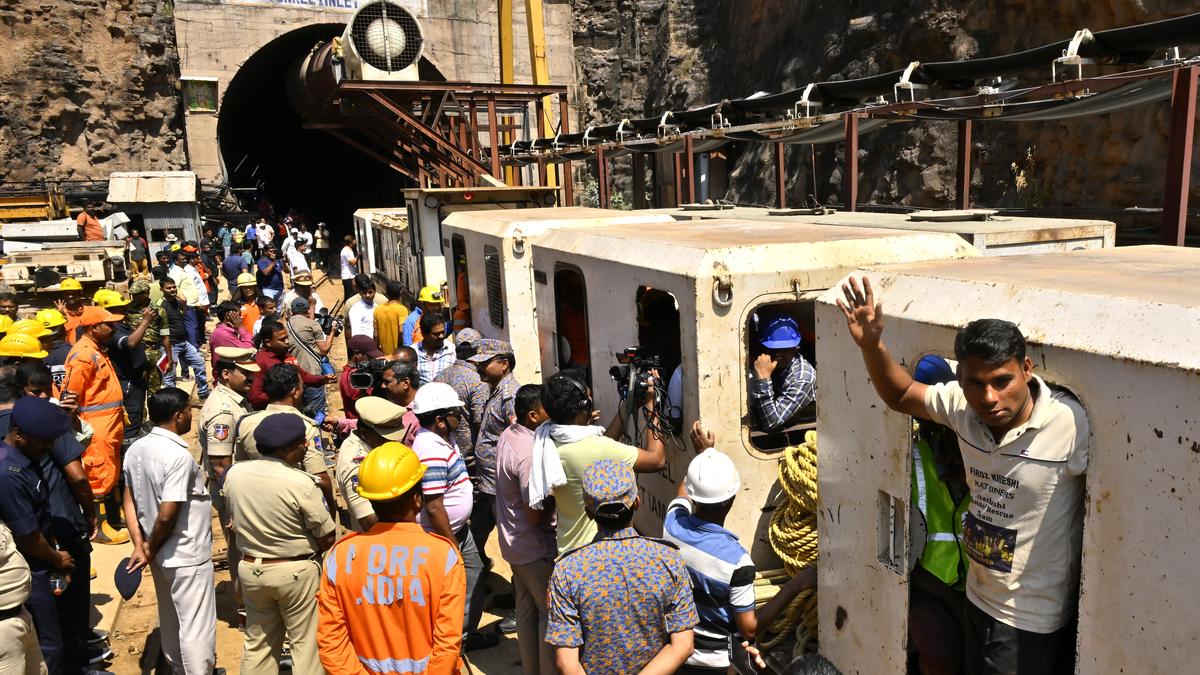
Families await in agony as rescue efforts intensify for trapped workers in SLBC tunnel collapse
The Hindu
Multi-agency rescue operation continues for trapped workers as families cling to hope amidst challenging conditions.
With the massive multi-agency rescue operation involving 10 top agencies continuing in a tough and arduous situation on the fourth day, family members of trapped workers remain gripped by anxiety and hope.
On Tuesday (February 25), around noon, rescue teams from the Indian Army, Navy, National Disaster Response Force (NDRF), State Disaster Response Force (SDRF), Hyderabad Disaster Response and Asset Protection Agency (HYDRAA), and experts from private agencies braced themselves for a challenging day ahead.
The locomotives carrying food and emergency supplies entered the tunnel, determined to navigate above 13 km of the tunnel to reach the eight workers still trapped inside after the tunnel boring machine (TBM).
However, their path is riddled with obstacles — thick silt and other materials block the final 40 metres, where the men remain stranded.
While experts from the Geological Survey of India (GSI) and National Geophysical Research Institute (NGRI) have been called in to assess tunnel stability, rescue personnel face an uphill battle, dewatering and desilting the area to gain access.
According to official sources, the loco-track provides access up to 12 km, the track length is 13.5 km, and the teams covered 13.790 km. While there is no water in the tunnel up to 10.7 km, 1.5-metre-high water was present up to 10.95 km, and 2 to 2.5-metre-high water was present up to 11.300 km. It takes around one hour to travel for 12 km in the tunnel. A damaged tunnel boring machine (TBM) is located at 13.5 km, and efforts are being intensified to pass over the machine and reach the 40-metre-long stretch where the victims are trapped. Experts from GSI and NGRI have been roped in to analyse the extent of mud, water and condition of the earth and rock formation above the tunnel.
Officials claim that the last 40 metres contain a mixture of soil and mud, without any stones or solid materials. The mud extends up to 200 metres at a height of 15 feet, with an estimated volume of 10,000 cubic feet. The primary challenge remains the removal of this mud and water, while the area where the collapse happened is sensitive.

At the all fishermen associations and fishing workers meeting organised at Thangachimadam near here on Tuesday, a unanimous decision to launch an indefinite hunger strike on February 28 was taken. Jesu Raja, leader of All Mechanised Boats Fishermen Association, said the hunger strike that would start on Friday would be continued till a positive announcement came from the Union government regarding release of the arrested Tamil fishermen by the Sri Lankan government.












